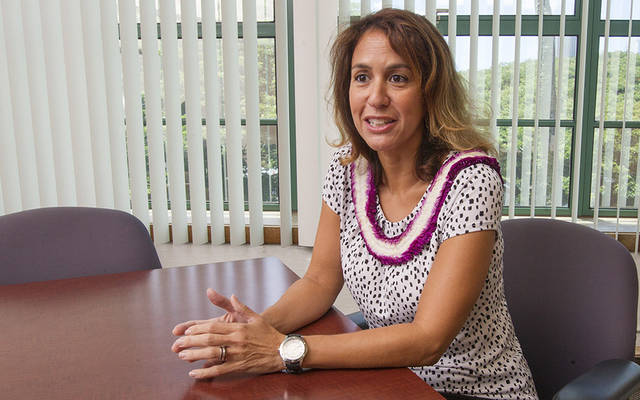The new state superintendent of public schools will find that the honeymoon period at the state Department of Education will be a short one. There is simply too much to do, too many expectations to fulfill.
Christina Kishimoto, 48, has taken the helm at the DOE. She succeeds Kathryn Matayoshi, whose contract was not renewed, despite having received favorable evaluations from the Board of Education.
The current drive, fueled in part by a push from Gov. David Ige, is to flatten the authority structure somewhat in a bureaucracy that has been long criticized for top-down administration.
The challenge for Kishimoto will be maintaining balance between that directive and the bottom-line objective of any public school system: to improve academic achievement and readiness for college and working lives of its young charges.
There is something for residents of culturally and economically diverse Hawaii to like in the personal story that Kishimoto told Honolulu Star-Advertiser writer Nanea Kalani. The daughter of Puerto Rican immigrants, she grew up in low-income public housing in New York City.
It was the inequity among neighborhood schools — the difference between her schools in the Bronx and campuses in wealthier areas — that she cites as her driving inspiration to improve public education. Hawaii’s large statewide school district is all about equity, in theory, but socioeconomic variations play out in individual schools, all the same.
Tracking how well new initiatives address the particular needs of individual campuses, producing real improvement in educational experience, remains the job of the DOE as a whole.
Kishimoto gave Kalani a rough sketch of her game plan, but the public will want more details before long. A strategic plan, developed in concert with the federal Every Student Succeeds Act (ESSA), is in hand, as well as a “blueprint” by the governor’s working group.
The first opportunity to fill in some of the blanks will be the implementation plan the superintendent must craft. In it Kishimoto will need to define what she means by her proposed new focus on school “design,” and how it can work within the DOE’s system of aging facilities and budget constraints.
Additionally, there are vacancies to fill in the top administrative tier to help carry out her plan. And there are front-burner issues to resolve, such as the bus driver shortage on Maui, the lingering problem with cooling classrooms and giving more students access to technology they’ll need to succeed.
Kishimoto does not face schools as distressed as in other large, urban settings, and that’s a help. There have been incremental improvements in student performance, some of it pushed by federal mandates and state oversight.
Nationally, the policy landscape more recently has changed. While the administration of former President Barack Obama emphasized some top-down competitive initiatives such as the Race to the Top grants, including those awarded to help struggling schools here, the enactment of ESSA ultimately reflected a more state-directed approach to achieving educational goals.
And both the governor and the teachers union, the Hawaii State Teachers Association, have championed even more granular changes. In the blueprint, Ige defines campus-level “empowerment” as “allowing those who are closest to the students and understand best how they are motivated to make many of the instructional and programmatic decisions.”
Kishimoto wants to amplify the student “voice” in education and foster teacher collaboration, all of which sounds good. But there still remains a crucial role for administration to know what success looks like, track progress and ensure that school innovation is shared broadly. The new superintendent’s fulfillment of that role is how her own job success will be measured.

